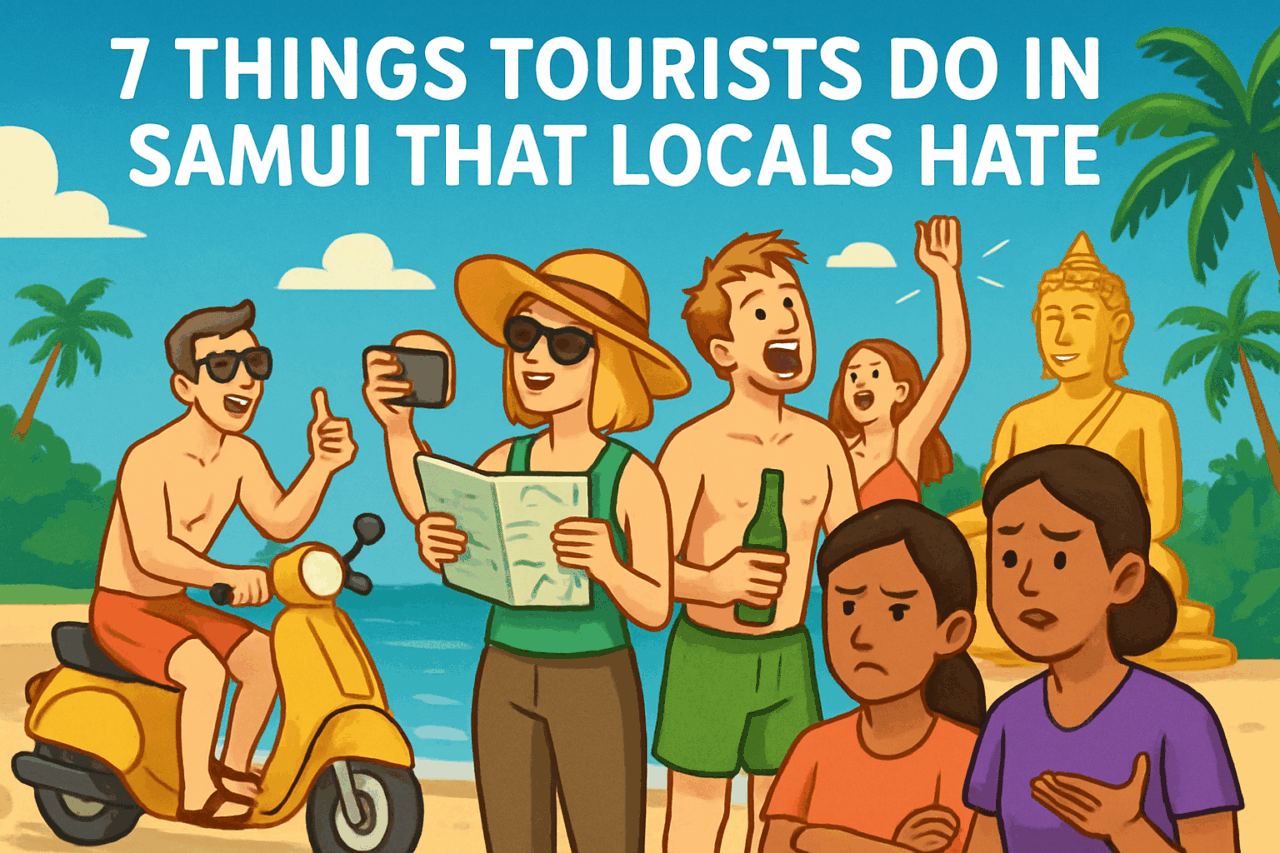7 Things Tourists Do in Samui That Locals Hate (And How to Be a Better Visitor)
There’s a moment—usually just after sunset—when the coconut palms of Koh Samui turn into silhouettes against a sky the color of ripe mango. The air hums with frogs and motorbikes, and the salty breeze carries the scent of lemongrass from a street food cart. This is when I feel the pulse of Samui most acutely: ancient, unhurried, quietly observant. Yet as with many beautiful places, the island’s serenity is sometimes ruffled by its visitors.
Don’t get me wrong—tourism is a lifeblood here, and most locals are gracious hosts. But there are quirks and customs, sacred silences and shared spaces, that deserve a gentle touch. So, let’s talk about the seven things tourists do in Samui that locals secretly (or not-so-secretly) wish they wouldn’t—and how you can sidestep these pitfalls to savor the island with more heart.
1. Riding Scooters Like It’s a Video Game
Samui’s main artery, the ring road, is a ribbon of chaos: trucks, songthaews, elderly papayasellers, and yes, a parade of scooter-riding tourists in questionable beachwear. Many newcomers see the scooter as a passport to freedom—wind in hair, sun on skin. But locals see the aftermath: scrapes, broken bones, and worse.
Tip: If you’ve never ridden a scooter, Samui’s steep hills and slick roads are not the place to start. Consider hiring a taxi or a songthaew (shared truck-taxi). If you do ride, wear a helmet—always. The hospital is not a Samui attraction you want to visit.
2. Treating Temples Like Tourist Props
Wat Plai Laem and Wat Phra Yai (the famed Big Buddha Temple) are more than scenic backdrops for Instagram—they’re living places of worship. It’s disheartening for locals to see visitors posing with Buddha statues, baring shoulders, or climbing sacred steps for the perfect selfie.
Tip: When visiting temples, dress modestly (shoulders and knees covered), remove shoes, and keep your voice soft. Before taking photos, check for signs or ask a monk if it’s permitted. For directions, you can search for “Wat Plai Laem” or “Wat Phra Yai (Big Buddha Temple)” on Google Maps.
3. Feeding the Monkeys (and the Stray Dogs)
It’s tempting to share fruit with the macaques at Na Muang Waterfall or toss scraps to soi dogs along the beach. But behind each act of kindness is a story of trouble: monkeys turn aggressive, dogs become dependent and congregate in packs.
Tip: Admire wildlife from a distance. If you want to help stray animals, consider donating to local organizations like Samui Dog and Cat Rescue. You can search for “Na Muang Waterfall” or “Samui Dog and Cat Rescue” on Google Maps.
4. Ignoring the Power of the Ocean
Chaweng Beach and Lamai Beach are siren calls for swimmers and jet-skiers alike. Yet, rip currents and sudden storms are not uncommon, and lifeguards are a rarity. Locals sometimes shake their heads at tourists who ignore red flags or swim while intoxicated.
Tip: Before diving in, check the flag system and talk to locals about safe swimming spots. If you’re new to water sports, book with reputable operators. Search for “Chaweng Beach” or “Lamai Beach” on Google Maps for directions.
5. Bargaining Too Hard at Markets
Fisherman’s Village Walking Street and Lamai Night Market are alive with color and chatter. Haggling is part of the dance, but driving too hard a bargain—especially over small amounts—can feel disrespectful to vendors who rely on every baht.
Tip: Bargain gently and with a smile, but if the price still feels fair for you, let the vendor keep a little extra. Remember, your tourist dollars ripple through the whole community. Find “Fisherman’s Village Walking Street” or “Lamai Night Market” by searching on Google Maps.
6. Leaving Noisy Footprints in Quiet Places
There’s a hush in the coconut groves of the island’s interior, or at the Secret Buddha Garden nestled in the hills. Loud music, drones, or shouted conversations break the spell for everyone, locals and fellow travelers alike.
Tip: Let the silence speak. If you visit secluded spots like Secret Buddha Garden, lower your voice and leave your Bluetooth speaker behind. You can search for “Secret Buddha Garden” on Google Maps.
7. Disregarding the Environment
Plastic cups in the sand, cigarette butts buried at the water’s edge—these are the scars of thoughtless tourism. Locals watch with sadness as Samui’s natural beauty is threatened by waste and coral damage.
Tip: Bring a reusable water bottle and a cloth bag. Join a local beach clean-up, or simply leave a place better than you found it. Every small act is a love letter to the island.
Final Thoughts: Treading Lightly, Loving Deeply
Koh Samui is a place of both joy and fragility—a coconut floating on the tides of change. To visit as a guest is to be entrusted with its secrets, to listen for the stories beneath the hum of the motorbikes and the crash of the waves. If you tread lightly, with empathy and curiosity, you might just leave a piece of your heart on the sand—and take home something far richer than a tan.
Happy travels, and may your Samui story be one the locals remember fondly.

Comments (0)
There are no comments here yet, you can be the first!